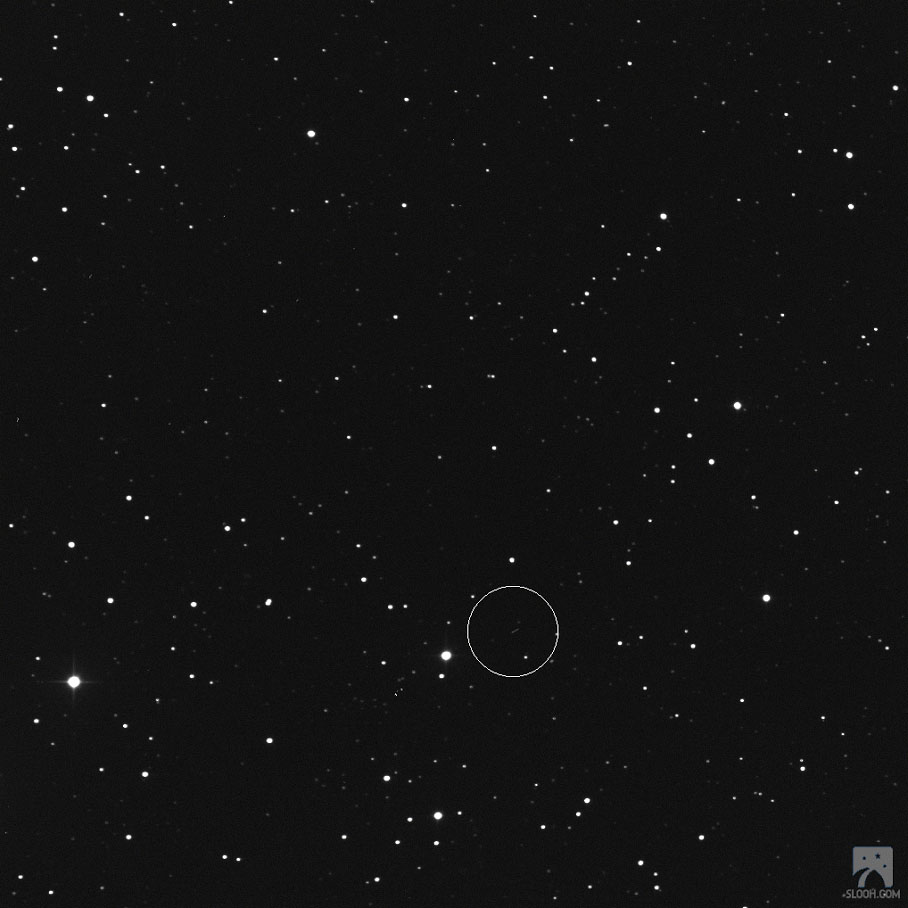Newfound Asteroid 'Rerun' Zips Harmlessly By Earth

A newfound asteroid about the size of a bus zipped safely by Earth late Tuesday (Jan. 24), just days after its discovery.
The asteroid 2017 BX buzzed by Earth at a range of 162,252 miles (261,119 kilometers) — about 30 percent closer than the distance between the Earth and the moon — at 11:54 p.m. EST (0454 Tuesday GMT), according to online Slooh observatory, which tracked the object late Tuesday in a live webcast at Slooh.com. The asteroid was first discovered Friday (Jan. 20). You can see an animation of the asteroid's orbit here.
Asteroid 2017 BX is between 13 and 46 feet (4 and 14 meters) in diameter, according to an alert by the Minor Planet Center at the Harvard-Smithsonian Center for Astrophysics, which tracks near-Earth objects. An estimate from NASA's Asteroid Watch team pegged the asteroid at about 28 feet (8.5 m) in diameter.
Slooh nicknamed the asteroid “Rerun" after a character portrayed by the late actor Fred Berry on the 1970s show "What's Happening!!" It is the second small asteroid to buzz the Earth this month. (The other asteroid, called 2017 AG13, flew harmlessly by Earth on Jan. 9.)
The asteroid's relatively dim brightness and its speed – a whopping 17,000 mph (27,358 km/h) ― made it difficult for Slooh telescopes to spot.
"I'd put it on the equivalent of an orca, or a killer whale," Slooh astronomer Eric Edelman said during the asteroid webcast. "We're looking for a killer whale floating out in space over 100,000 miles away from us."
Finding the asteroid with Slooh's half-meter telescope in Spain's Canary Islands was "one of the world's most difficult 'Where's Waldo' games," Edelman added.
Get the Space.com Newsletter
Breaking space news, the latest updates on rocket launches, skywatching events and more!

Asteroid 2017 BX was first spotted by scientists using the Pan-STARRS 1 observatory atop the summit of Haleakala in Maui, Hawaii. Scientists and NASA researchers regularly use observatories like Pan-STARRS 1 to track asteroids and monitor any space rocks that could pose an impact threat to Earth.
Email Tariq Malik at tmalik@space.com or follow him @tariqjmalik. Follow us @Spacedotcom, Facebook and Google+. Original article on Space.com.
Join our Space Forums to keep talking space on the latest missions, night sky and more! And if you have a news tip, correction or comment, let us know at: community@space.com.

Tariq is the Editor-in-Chief of Space.com and joined the team in 2001, first as an intern and staff writer, and later as an editor. He covers human spaceflight, exploration and space science, as well as skywatching and entertainment. He became Space.com's Managing Editor in 2009 and Editor-in-Chief in 2019. Before joining Space.com, Tariq was a staff reporter for The Los Angeles Times covering education and city beats in La Habra, Fullerton and Huntington Beach. In October 2022, Tariq received the Harry Kolcum Award for excellence in space reporting from the National Space Club Florida Committee. He is also an Eagle Scout (yes, he has the Space Exploration merit badge) and went to Space Camp four times as a kid and a fifth time as an adult. He has journalism degrees from the University of Southern California and New York University. You can find Tariq at Space.com and as the co-host to the This Week In Space podcast with space historian Rod Pyle on the TWiT network. To see his latest project, you can follow Tariq on Twitter @tariqjmalik.









